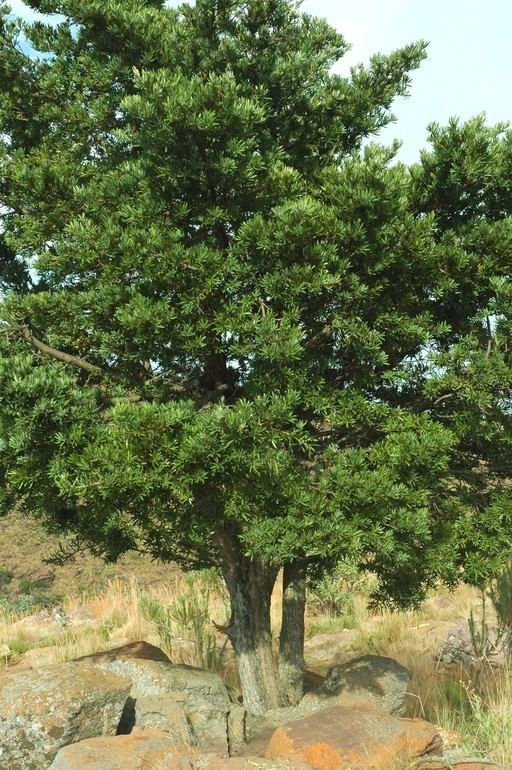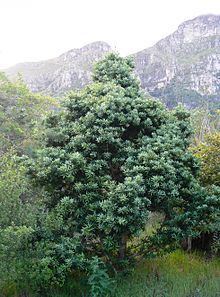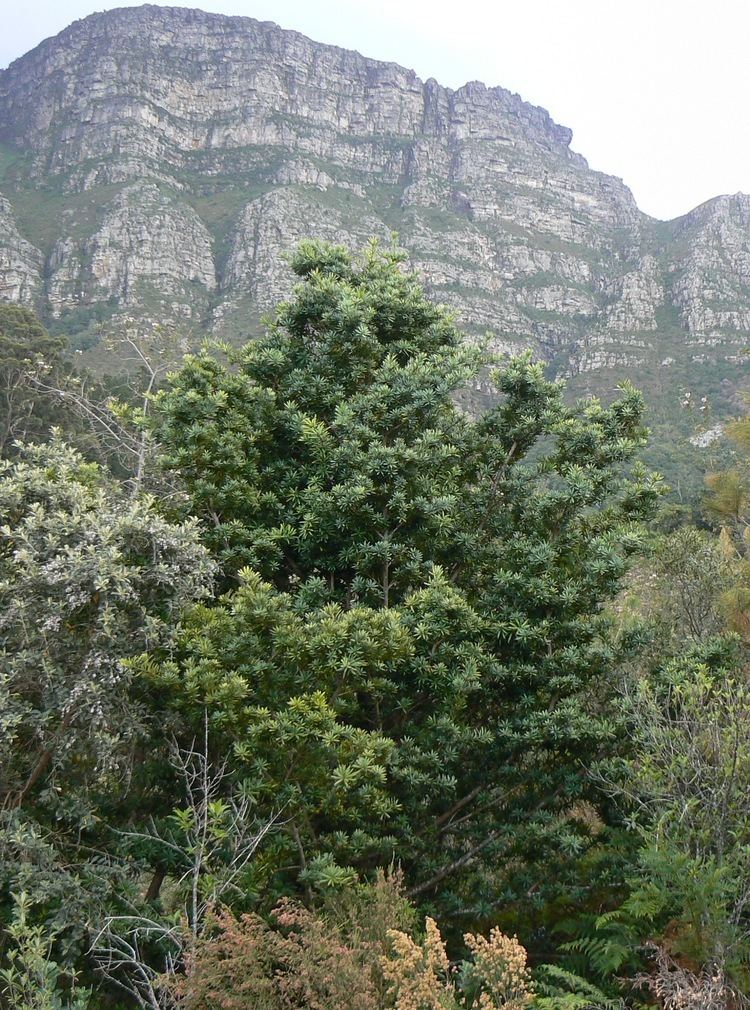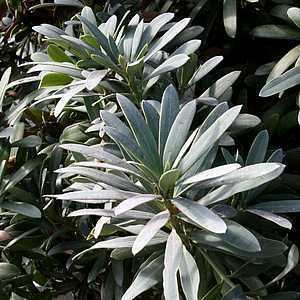Higher classification Plum pine | Division Pinophyta Rank Species | |
 | ||
Similar Ocotea bullata, Afrocarpus falcatus, Plum pine, Podocarpus henkelii, Afrocarpus | ||
Podocarpus latifolius broad leaved yellowwood hd 02
Podocarpus latifolius (broad-leaved yellowwood or real yellowwood, Afrikaans: Opregte-geelhout, Northern Sotho: Mogôbagôba, Xhosa: Umcheya, Zulu: Umkhoba) is a large evergreen tree up to 35 m high and 3 m trunk diameter, in the conifer family Podocarpaceae; it is the type species of the genus Podocarpus.
Contents
- Podocarpus latifolius broad leaved yellowwood hd 02
- Podocarpus latifolius broad leaved yellowwood hd 03 by laborator teba
- Appearance
- Distribution
- Human usage
- References

The real yellowwood has been declared the national tree of South Africa and is protected here.
Podocarpus latifolius broad leaved yellowwood hd 03 by laborator teba
Appearance

The real yellowwood is a large evergreen tree that grows up to 30 meters in height. It grows relatively slowly but forms a wood of exceptional quality.

The leaves are strap-shaped, 25–40 mm long on mature trees, larger, to 100 mm long, on vigorous young trees, and 6–12 mm broad, with a bluntly pointed tip. The species name "latifolius" actually means "wide-leaved". The bright-coloured foliage of new growth stands out against the dark leaves of mature foliage.

The cones of this dioecious tree are berry-like, with a single (rarely two) 7–11 mm seed apical on an 8–14 mm pink-purple aril; the aril is edible and sweet. The male (pollen) cones are 10–30 mm long.
Distribution
It is native to the moister southern and eastern areas of South Africa, from coastal areas of the Western Cape east to KwaZulu-Natal and north to eastern Limpopo. Pockets are naturally found further north in and around Zimbabwe.
It is commonly found in afro-temperate forests and often in mountainous areas. In harsh or exposed areas it tends to become stunted, small and dense.
Human usage
It is a slow-growing tree but exceptionally long-lived, and is increasingly grown as an ornamental feature in South African gardens. The unusual texture of the foliage is a reason for its growing popularity. The bright edible berries attract birds, which spread the seed.
The wood is hard, similar to yew wood, used for furniture, panelling, etc. Due to past over-exploitation, little is now cut.
